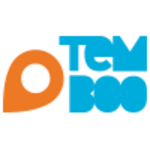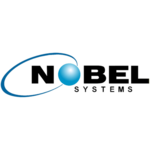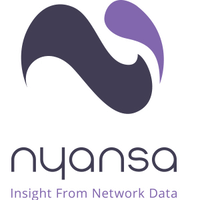Description

Oracle Cerner

ScienceSoft
Comprehensive Overview: Oracle Cerner vs ScienceSoft
Oracle Cerner and ScienceSoft operate in different segments within the healthcare IT industry, offering distinct solutions tailored to various needs. Below is an overview of their primary functions, target markets, market presence, and key differentiating factors.
Oracle Cerner
a) Primary Functions and Target Markets
- Primary Functions: Oracle Cerner is a leading provider of electronic health record (EHR) systems and healthcare information technology solutions. It offers a comprehensive suite of products including EHRs, population health management, interoperability solutions, care coordination, and revenue cycle management.
- Target Markets: Oracle Cerner primarily targets large healthcare systems, hospitals, and clinics. Its focus is on delivering scalable, integrated solutions that improve patient care, streamline operations, and enhance data management across various healthcare institutions.
b) Market Share and User Base
- Overall Market Share: Oracle Cerner is one of the top players in the EHR market. It competes with other giants like Epic Systems, Allscripts, and MEDITECH. While exact figures can fluctuate, Cerner traditionally holds a significant portion of the market, often competing closely with Epic for dominance.
- User Base: Cerner's user base includes thousands of healthcare facilities globally, ranging from large hospital networks to smaller clinics and specialty practices. Its widespread adoption is bolstered by its robust product offerings and reputation in the industry.
c) Key Differentiating Factors
- Integration Capabilities: Oracle Cerner is known for its strong integration capabilities, both within its suite of products and with third-party solutions, enhancing interoperability in healthcare systems.
- Customization Options: Cerner offers a highly customizable platform, allowing healthcare providers to tailor workflows and functionalities to their specific needs.
- Cloud Strategy: With Oracle's acquisition of Cerner, there is a strategic emphasis on leveraging cloud technologies to enhance scalability, security, and innovation.
ScienceSoft
a) Primary Functions and Target Markets
- Primary Functions: ScienceSoft is a global IT consulting and software development company that offers a range of services, including healthcare software development, IT consulting, and data analytics. Although not primarily known for EHR solutions, they develop customized healthcare applications, telemedicine solutions, and healthcare data management systems.
- Target Markets: ScienceSoft focuses on a broad range of markets including healthcare providers, hospitals, clinics, as well as pharmaceutical companies and medical device manufacturers. They emphasize bespoke software solutions tailored to the unique needs of their clients.
b) Market Share and User Base
- Overall Market Share: ScienceSoft does not directly compete in the EHR market like Cerner but rather provides comprehensive IT services and custom software solutions. Its market presence is significant in the custom healthcare software development space, but it does not have the same kind of market share in standardized EHR systems.
- User Base: ScienceSoft serves a varied client base, including healthcare institutions and other businesses looking for tailored IT solutions. They are known for their flexibility and ability to adapt to client-specific requirements, rather than a broad standardized solution.
c) Key Differentiating Factors
- Customization and Flexibility: ScienceSoft stands out for its capacity to deliver highly customized software solutions. Their focus is on developing unique products that meet specific business requirements.
- Diverse Technology Expertise: ScienceSoft has expertise in various technologies beyond healthcare IT, allowing them to integrate cross-industry innovations into their healthcare solutions.
- Consultative Approach: They adopt a consultative engagement model, offering strategic IT consulting to optimize healthcare operations and implement cutting-edge technologies.
Conclusion
Oracle Cerner and ScienceSoft serve distinct roles in the healthcare IT landscape. Oracle Cerner is a major EHR provider with a strong focus on integrated, scalable solutions for large healthcare systems, boasting a significant market share among standardized EHR providers. In contrast, ScienceSoft specializes in custom software development, offering flexible, tailored solutions for a more niche market within healthcare IT and beyond. Their key differences lie in the scope of their offerings, market strategies, and customization capabilities.
Contact Info

Year founded :
Not Available
Not Available
Not Available
Not Available
Not Available

Year founded :
1989
Not Available
Not Available
United States
http://www.linkedin.com/company/sciencesoftware
Feature Similarity Breakdown: Oracle Cerner, ScienceSoft
When comparing Oracle Cerner and ScienceSoft, it is important to note that both companies provide healthcare software solutions, but they may differ significantly in scope and focus. Here’s a breakdown based on the typical offerings from electronic health record (EHR) systems like Oracle Cerner and custom healthcare solutions that ScienceSoft might offer:
a) Core Features in Common
Both Oracle Cerner and healthcare solutions by ScienceSoft typically offer several core features that are common in EHR and healthcare management systems:
-
Patient Management:
- Both platforms offer patient registration, scheduling, and management features.
-
Electronic Health Records (EHR):
- Storing and managing comprehensive patient records, including medical history, diagnoses, medications, treatment plans, and test results.
-
Clinical Decision Support:
- Tools for aiding healthcare professionals with decision-making by providing relevant medical information and alerts.
-
Billing and Financial Management:
- Integration with billing systems to manage patient billing, insurance claims, and financial operations.
-
Interoperability:
- Capabilities to integrate with other healthcare systems, ensuring seamless data exchange.
-
Data Analytics and Reporting:
- Generating reports and analytics to support data-driven decision-making in clinical and administrative processes.
b) User Interfaces Comparison
-
Oracle Cerner:
- Typically known for a robust and comprehensive user interface designed to meet the varying needs of large healthcare systems.
- Focuses on a wide range of features that can sometimes lead to complexity, potentially requiring extensive training for efficient use.
- Offers customizable dashboards and specialized workflows that cater to different medical specialties.
-
ScienceSoft:
- As a company known for custom development solutions, ScienceSoft's user interfaces are tailored specifically to the client’s needs, potentially offering a more streamlined and user-friendly experience.
- Emphasis on simplified, intuitive designs that enhance usability for specific client workflows.
- Flexibility to adapt the interface based on client feedback and specific user stories.
c) Unique Features
-
Oracle Cerner:
- Extensive network of healthcare providers and long-standing industry integration.
- Advanced population health management tools and public health data interfaces.
- Strong emphasis on research and machine learning to enhance predictive analytics.
-
ScienceSoft:
- Customizable solutions tailored to the specific needs of the client, which can include unique features not found in off-the-shelf software.
- Ability to integrate newer technologies quickly, such as IoT in healthcare, AI-driven patient monitoring, and telemedicine capabilities.
- Focus on flexibility and scalability, often offering more personalized customer support and implementation assistance.
In summary, while Oracle Cerner offers a comprehensive, well-established healthcare platform with a wide array of features designed for large healthcare systems, ScienceSoft focuses on providing tailored solutions that align closely with specific customer needs, offering more customization and potentially innovative features depending on client requirements.
Features

Patient Care
Data and Analytics
Operational Efficiency

Reliable Security
Scalability
User-Friendly Interface
Comprehensive Support
Robust Performance
Best Fit Use Cases: Oracle Cerner, ScienceSoft
Oracle Cerner and ScienceSoft cater to different types of businesses and project needs within the healthcare IT ecosystem. Here's a breakdown of their best-fit use cases, scenarios, and how they cater to various industry verticals or company sizes:
Oracle Cerner
a) Best Fit Use Cases:
-
Large Healthcare Organizations:
- Oracle Cerner is ideally suited for large hospitals and healthcare systems, including multi-facility organizations. Its comprehensive suite of healthcare solutions can manage the complexities of such large-scale operations.
-
Integrated Health Systems:
- It excels in environments needing integrated care solutions, such as hospitals needing electronic health records (EHR) and health information exchanges.
-
Public Health Systems:
- Governments or municipal bodies running public health systems benefit from Cerner’s scalable and robust structures. It provides the capabilities needed for vast data management and integration between multiple care facilities.
-
Health Networks Requiring Advanced Analytics:
- Any business looking to leverage advanced healthcare analytics, predictive modeling, and tools for improved operational efficiency and patient care quality could benefit from Cerner’s capabilities.
d) Industry Vertical or Company Size:
- Large Enterprise Focus: Cerner mainly targets large-scale institutions due to its extensive capabilities and not-so-inexpensive implementations.
- Healthcare and Public Sectors: Its solutions are primarily tailored for the healthcare industry, including acute care, public health, and even mental health services.
ScienceSoft
b) Preferred Use Case Scenarios:
-
Customized Software Development:
- ScienceSoft is well-suited for companies looking to develop customized software solutions quickly for their specific healthcare-related needs.
-
Mid-Sized Healthcare Facilities:
- Medium-sized hospitals or clinics that need tailor-made solutions but do not have the resources for large-scale implementations like Cerner might prefer ScienceSoft’s more flexible approach.
-
Consulting and IT Strategy:
- Businesses requiring consulting services for digital transformation strategies, especially in healthcare, could leverage ScienceSoft's expertise in IT consulting.
-
Broad Range of IT Services:
- Firms looking for a broader scope of services beyond just healthcare IT, including CRM, data analytics, or cybersecurity, especially in convergence with healthcare IT.
d) Industry Vertical or Company Size:
- SMB and Mid-Sized Enterprises: ScienceSoft can cater to a broader array of company sizes, from small businesses to mid-sized enterprises due to its flexible and customizable approach.
- Multiple Sectors Beyond Healthcare: While strong in healthcare, ScienceSoft also serves other industries needing tech solutions like retail, manufacturing, and telecommunications, allowing them to address more diverse IT challenges.
In summary, while Oracle Cerner is most advantageous for large-scale healthcare and public health projects requiring comprehensive, integrated solutions, ScienceSoft stands out as a versatile IT solutions provider with the ability to deliver custom software and consulting services across various sectors, making it ideal for mid-sized businesses needing more tailored solutions.
Pricing

Pricing Not Available

Pricing Not Available
Metrics History
Metrics History
Comparing undefined across companies
Conclusion & Final Verdict: Oracle Cerner vs ScienceSoft
When evaluating Oracle Cerner and ScienceSoft, we are looking at two distinct offerings in the healthcare technology space, each with its own set of advantages and target audiences.
Conclusion and Final Verdict
a) Best Overall Value
Determining the best overall value between Oracle Cerner and ScienceSoft largely depends on the specific needs and scale of the healthcare organization. Oracle Cerner, being one of the giants in the healthcare IT industry, provides highly comprehensive solutions with a wide range of functionalities suitable for large hospitals and healthcare systems. ScienceSoft, on the other hand, offers more customizable solutions that can be tailored to specific needs, which might offer better value for smaller clinics or organizations looking for specific features without the overhead of a large-scale system.
Best Overall Value:
- For Large Healthcare Systems: Oracle Cerner, due to its comprehensive suite and robust capabilities.
- For Smaller or Specialized Practices: ScienceSoft, due to its customization potential and agility.
b) Pros and Cons
Oracle Cerner:
-
Pros:
- Comprehensive and integrated healthcare IT solutions.
- Strong analytics and reporting functionalities.
- Globally recognized with a large support network.
- Continuous updates and innovations in line with industry standards.
-
Cons:
- Can be expensive, with high upfront and maintenance costs.
- Complexity in implementation and longer onboarding times.
- Potential for overkill with features for smaller practices.
ScienceSoft:
-
Pros:
- Highly customizable solutions tailored to specific needs.
- Faster deployment and easier to use for small to mid-sized practices.
- Generally more cost-effective than large, enterprise-level systems.
- Strong customer support and flexibility in service offerings.
-
Cons:
- May lack some of the comprehensive features of larger EHR systems like Oracle Cerner.
- Limited global presence and brand recognition compared to larger competitors.
- Potential need for additional integrations with third-party systems.
c) Recommendations for Users
-
Assess Needs Thoroughly: Users should conduct a detailed needs assessment to understand their requirements in terms of features, scalability, and budget. This will help in aligning their needs with what each vendor offers.
-
Consider Scalability: Larger organizations or those anticipating rapid growth should consider Oracle Cerner for its scalability. Smaller practices or those with specific niche requirements might benefit more from the flexibility offered by ScienceSoft.
-
Evaluate Total Cost of Ownership (TCO): It’s crucial to look beyond initial costs and consider the TCO, including implementation, training, and ongoing maintenance. This evaluation can reveal hidden costs that might impact the decision.
-
Pilot Testing: Where possible, conduct pilot testing or request demos from both vendors to understand the usability and fit of the system within the existing workflow of the organization.
-
Consult Peer Reviews: Engaging with other organizations that have used these systems can provide insights into real-world challenges and benefits that might not be apparent through vendor interactions alone.
Ultimately, the decision should be driven by the specific operational needs and strategic objectives of the healthcare entity. Large entities with broad requirements will likely find Oracle Cerner a better fit, whereas smaller or highly specialized organizations might find ScienceSoft's flexibility and cost-effectiveness more appealing.
Add to compare
Add similar companies



